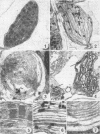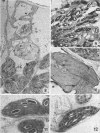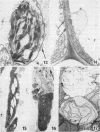Abstract
Mesophyll chloroplasts of the C4-pathway grasses Sorghum and Paspalum and of the C3-pathway legume soybean undergo ultrastructural changes under moderate light intensities (170 w·m−2, 400-700 nanometers) at a tme when photosynthesis is much reduced by low temperature (10 C). The pattern of ultrastructural change was similar in these species, despite some differences in the initial sites of low temperature action on photosynthesis and differences in their mechanisms of CO2 fixation. Starch grains in the chloroplasts rapidly reduce in size when chilling stress is applied. At or before the time starch grains completely disappear the membranes of the individual stromal thylakoids close together, reducing the intraspace between them while the chloroplast as a whole begins to swell. Extensive granal stacking appears to hold the thylakoids in position for some time, causing initial swelling to occur in the zone of the peripheral reticulum, when present. At more advanced stages of swelling the thylakoid system unravels while the thylakoid intraspaces dilate markedly. Initial thylakoid intraspace contraction is tentatively ascribed to an increase in the transmembrane hydrogen ion gradient causing movement of cations and undissociated organic acids from the thylakoid intraspace to the stroma. Chloroplast swelling may be caused by a hold-up of some osmotically active photosynthetic product in the chloroplast stroma. After granal unraveling and redilation of the thylakoid intraspaces, chloroplasts appear similar to those isolated in low salt hypotonic media. At the initial stages of stress-induced ultrastructural change, a marked gradient in degree of chloroplast swelling is seen within and between cells, being most pronounced near the surface of the leaf directly exposed to light.
Full text
PDF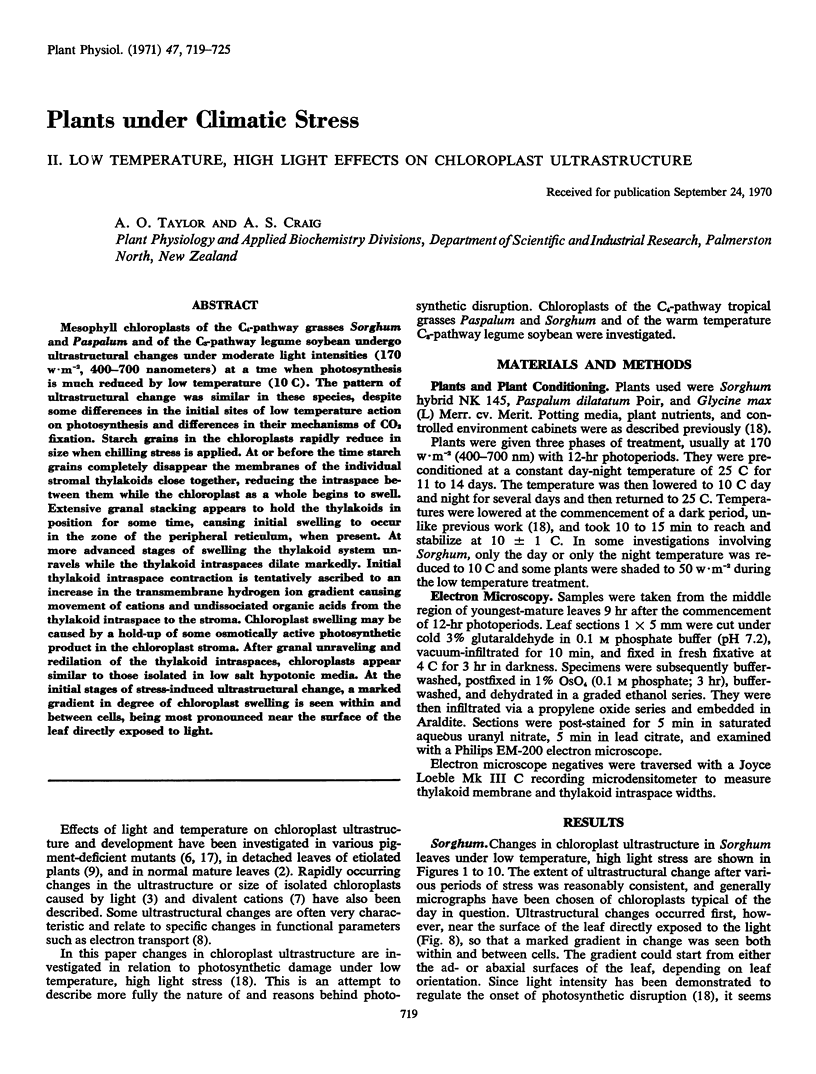
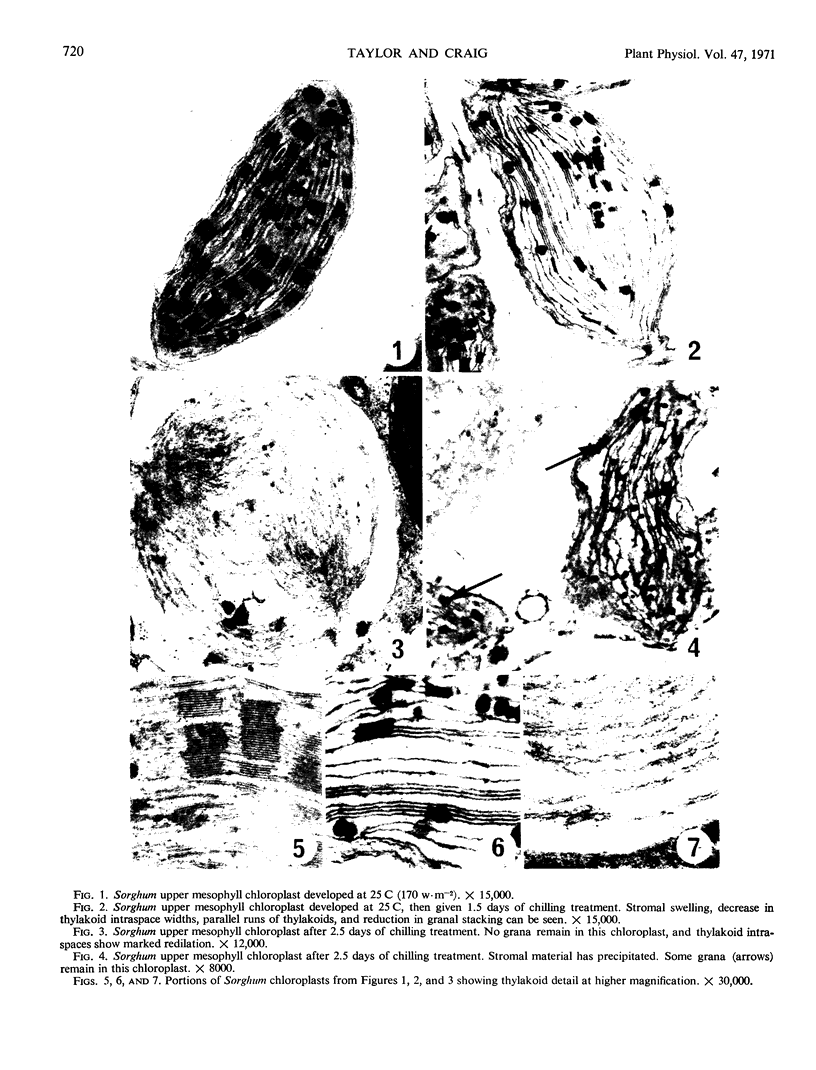
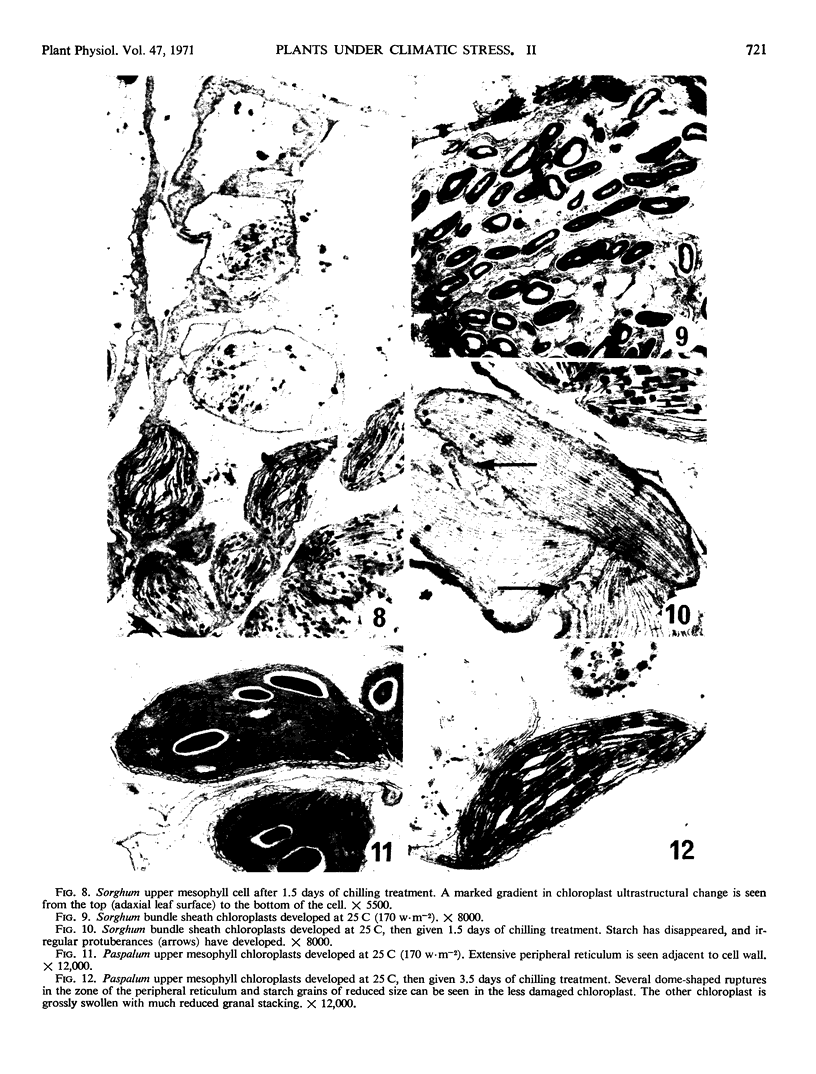
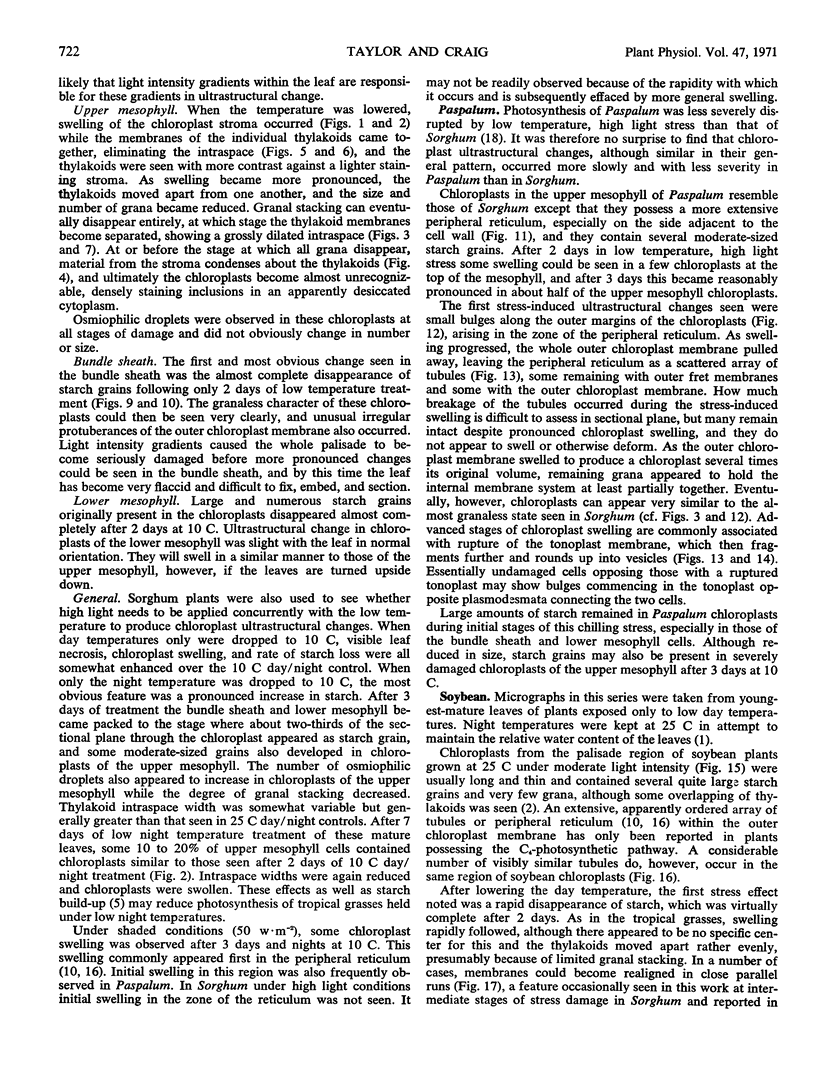

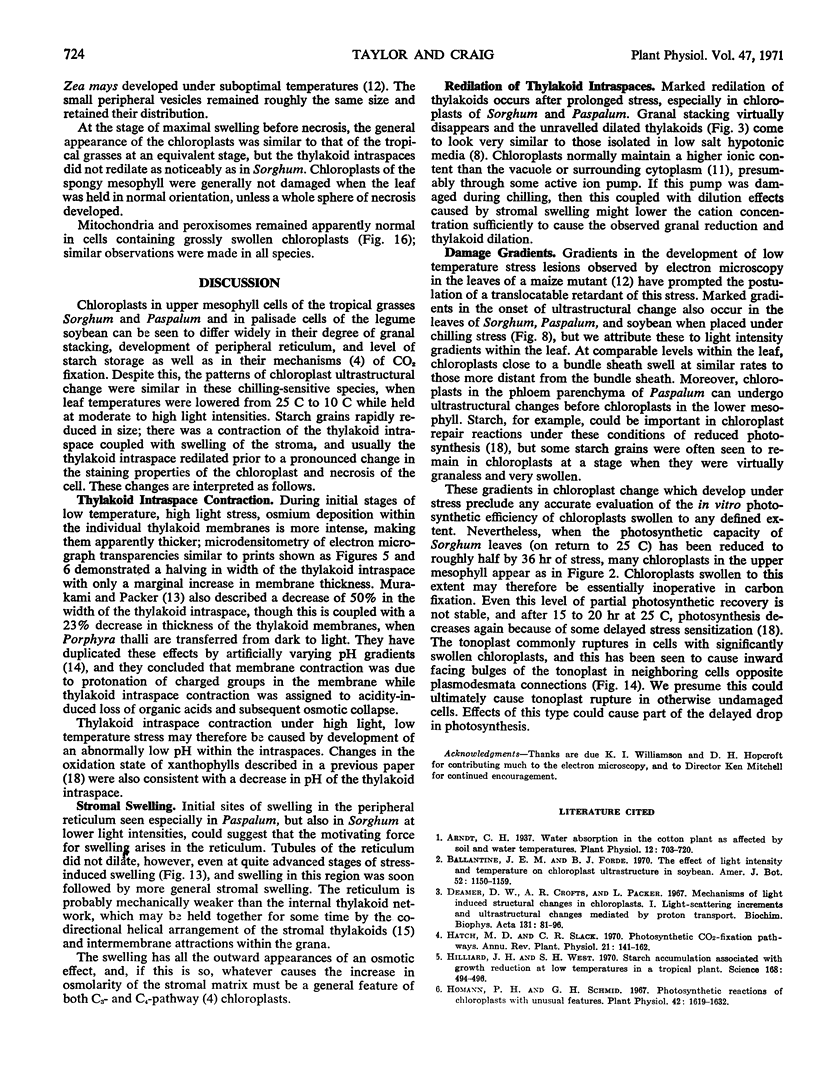
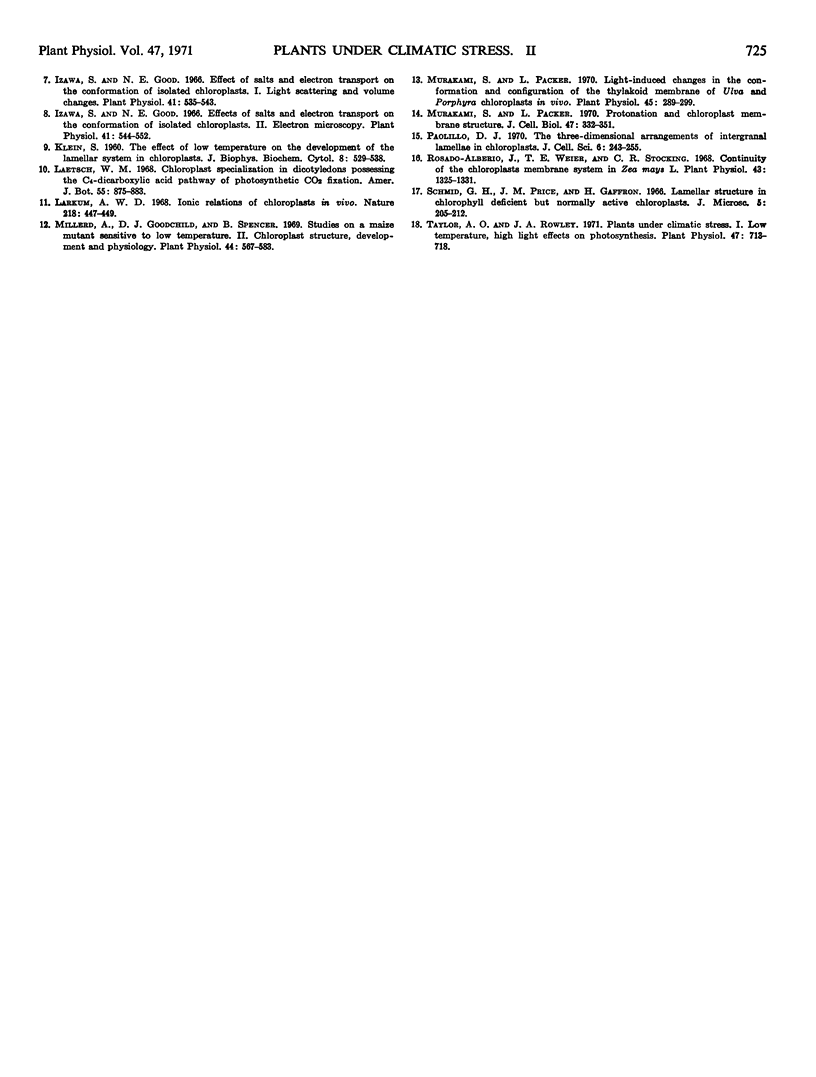
Images in this article
Selected References
These references are in PubMed. This may not be the complete list of references from this article.
- Arndt C. H. WATER ABSORPTION IN THE COTTON PLANT AS AFFECTED BY SOIL AND WATER TEMPERATURES. Plant Physiol. 1937 Jul;12(3):703–720. doi: 10.1104/pp.12.3.703. [DOI] [PMC free article] [PubMed] [Google Scholar]
- Hilliard J. H., West S. H. Starch accumulation associated with growth reduction at low temperatures in a tropical plant. Science. 1970 Apr 24;168(3930):494–496. doi: 10.1126/science.168.3930.494. [DOI] [PubMed] [Google Scholar]
- Homann P. H., Schmid G. H. Photosynthetic reactions of chloroplasts with unusual structures. Plant Physiol. 1967 Nov;42(11):1619–1632. doi: 10.1104/pp.42.11.1619. [DOI] [PMC free article] [PubMed] [Google Scholar]
- Izawa S., Good N. E. Effect of Salts and Electron Transport on the Conformation of Isolated Chloroplasts. II. Electron Microscopy. Plant Physiol. 1966 Mar;41(3):544–552. doi: 10.1104/pp.41.3.544. [DOI] [PMC free article] [PubMed] [Google Scholar]
- Izawa S., Good N. E. Effect of salts and electron transport on the conformation of isolated chloroplasts. I. Light-scattering and volume changes. Plant Physiol. 1966 Mar;41(3):533–543. doi: 10.1104/pp.41.3.533. [DOI] [PMC free article] [PubMed] [Google Scholar]
- KLEIN S. The effect of low temperature on the development of the lamellar system in chloroplasts. J Biophys Biochem Cytol. 1960 Oct;8:529–538. doi: 10.1083/jcb.8.2.529. [DOI] [PMC free article] [PubMed] [Google Scholar]
- Millerd A., Goodchild D. J., Spencer D. Studies on a Maize Mutant Sensitive to Low Temperature II. Chloroplast Structure, Development, and Physiology. Plant Physiol. 1969 Apr;44(4):567–583. doi: 10.1104/pp.44.4.567. [DOI] [PMC free article] [PubMed] [Google Scholar]
- Murakami S., Packer L. Light-induced changes in the conformation and configuration of the thylakoid membrane of Ulva and Porphyra chloroplasts in vivo. Plant Physiol. 1970 Mar;45(3):289–299. doi: 10.1104/pp.45.3.289. [DOI] [PMC free article] [PubMed] [Google Scholar]
- Rosado-Alberio J., Weier T. E., Stocking C. R. Continuity of the Chloroplast Membrane Systems in Zea mays L. Plant Physiol. 1968 Sep;43(9):1325–1331. doi: 10.1104/pp.43.9.1325. [DOI] [PMC free article] [PubMed] [Google Scholar]
- Taylor A. O., Rowley J. A. Plants under Climatic Stress: I. Low Temperature, High Light Effects on Photosynthesis. Plant Physiol. 1971 May;47(5):713–718. doi: 10.1104/pp.47.5.713. [DOI] [PMC free article] [PubMed] [Google Scholar]



